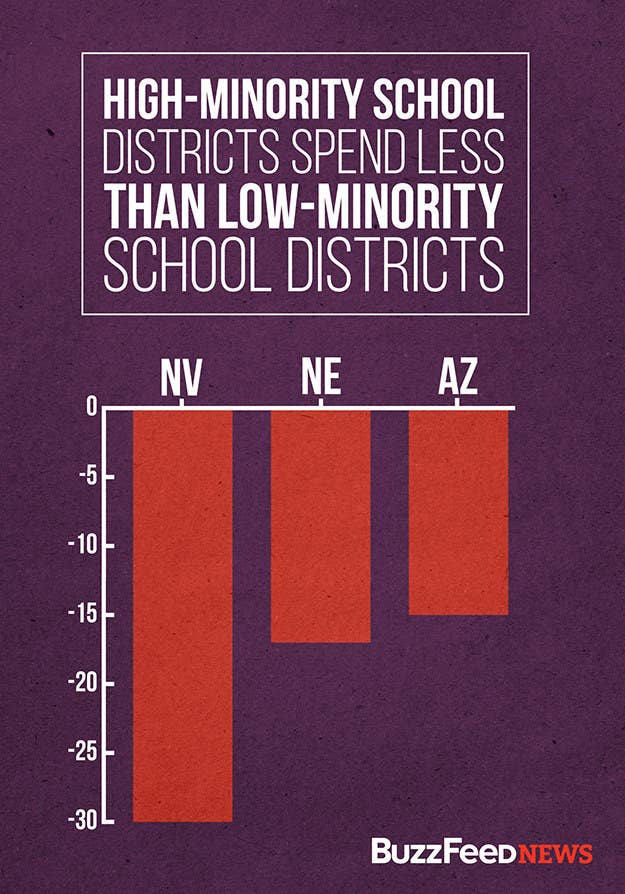
"We still have school systems that are fundamentally separate and unequal," said Secretary of Education Arne Duncan on a call with reporters today. "Students are being shortchanged when it comes to state and local funding."
In 23 states, the school districts with the most poor students spend less money per student than districts with the lowest level of poor students, creating stark funding gaps, according to data released today by the Education Department.
In Pennsylvania, the department said, the gap is particularly large: The wealthiest districts spend 30% more per student than their counterparts with large numbers of poor students. In Vermont, poor school districts spend 18% less on their students than the wealthiest districts.
On a local level, the gap between rich and poor districts happens in part because school districts in wealthier areas receive more money from taxes. State budgets are often unable to fully make up the difference by funneling extra money into poor areas.
Schools in poor areas are given federal money that ultimately equalizes funding between high- and low-poverty school districts: On a nationwide level, high-poverty districts spend 15% less than wealthy districts, but once federal funding is accounted for, that gap drops to just 1%.
But that federal money is intended to supplement state funding, not replace it, Duncan said. Poor students, who start out far behind and usually have less experienced teachers, need more resources than wealthy and middle-class counterparts, and thus require more per-student spending.
Duncan said that he is troubled even by states where poor and wealthy students are funded equally. "It's better than unequal, but is that sufficient to really close opportunity gaps and achievement gaps?" he said.
The department also said that in 20 states, districts with the most minority students spend less money per student than districts with very few students of color. In Nevada, the highest-minority districts spend 30% less than low-minority districts.

Some education experts are taking issue with the department's calculations. "The chances that [the government's] data are accurate is very, very low," said Michael Petrilli, the president of the right-leaning Fordham Foundation, an education policy think tank. Because districts often use rough estimates to calculate their budgets, Petrilli said, "There's plenty of reasons to believe that they have no idea how much money they are actually spending at the school level."
Duncan also called for the closing of what he called a "loophole" in the No Child Left Behind law, which requires that students in high- and low-poverty districts receive "comparable" services. But comparability is calculated by averaging out teacher salaries across all schools in a district, allowing for significant variations in spending at individual schools.
Duncan is calling to close that loophole in a new version of NCLB, which Congress is attempting to pass, by requiring districts to calculate funding using their actual spending on teacher salaries, not averages. The Center for American Progress highlighted the loophole in a report this month.
In some states, poor school districts actually spent far more money per student than wealthy districts: around 20% more in Minnesota, Alaska, and Kentucky.
